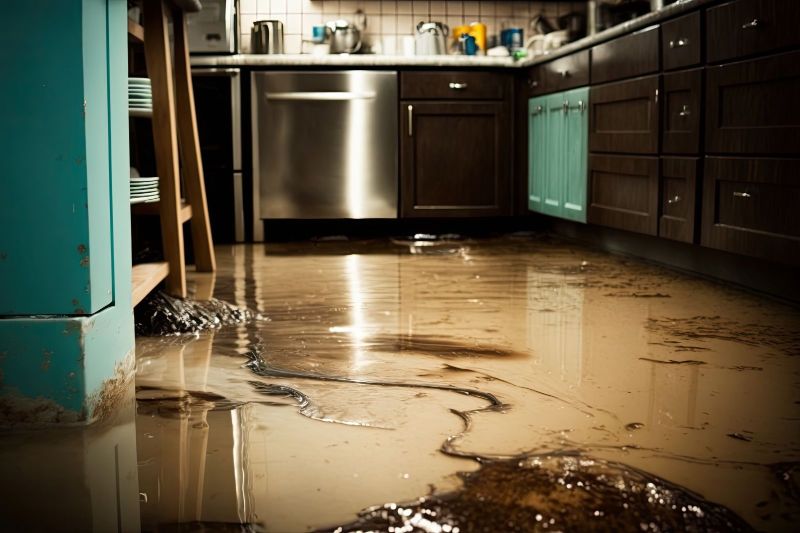Water damage is a common problem that many homeowners face. Whether it's due to a burst pipe, a leaky roof, or flooding, water damage can have significant consequences for the indoor environment. One of the most concerning effects is the long-term impact on indoor air quality. When water damage occurs, it creates a breeding ground for mold and other harmful pollutants, which can have detrimental effects on the health of occupants. In this article, we will explore the long-term effects of water damage on indoor air quality and discuss steps to mitigate these risks.
Mold Growth and Airborne Contaminants
When excess moisture is present, mold spores can easily proliferate in indoor environments. Mold growth not only damages the structure of the building but also releases spores into the air. These spores can be inhaled by occupants and trigger various respiratory issues, allergic reactions, and even exacerbate existing conditions such as asthma. Additionally, mold can produce mycotoxins, which are toxic substances that can cause severe health problems when inhaled or ingested.
Besides mold, water damage can also lead to the growth of bacteria and other microorganisms. These microorganisms can release airborne contaminants, including volatile organic compounds (VOCs), endotoxins, and allergens, which further deteriorate the indoor air quality. Prolonged exposure to these pollutants can result in symptoms such as coughing, sneezing, wheezing, headaches, fatigue, and skin irritation.
Deterioration of Building Materials
Water damage not only affects the air quality but also poses risks to the structural integrity of a building. When water seeps into walls, ceilings, or floors, it can lead to the deterioration of building materials, such as drywall, insulation, and wooden structures. As these materials break down, they release particles and fibers into the air, which can be inhaled by occupants.
For example, when water-damaged drywall crumbles, it can release gypsum particles, silica dust, and potentially asbestos fibers if the building contains older materials. Inhaling these particles can cause respiratory issues and other health problems. Similarly, damaged insulation can release fiberglass fibers, which can irritate the skin, eyes, and respiratory system.
Persistent Odors and Poor Ventilation
Water damage often leaves behind persistent odors that can be unpleasant and indicative of underlying issues. These odors are usually caused by the growth of mold and bacteria. Even after the visible signs of water damage are addressed, the lingering smells can persist if proper remediation and ventilation measures are not implemented.
Moreover, water damage can impact the ventilation system of a building. Moisture can infiltrate HVAC systems, air ducts, and filters, promoting the growth of mold and spreading contaminants throughout the indoor environment. This compromised ventilation system can circulate polluted air, leading to ongoing air quality problems and potential health risks for occupants.
Mitigating the Effects of Water Damage on Indoor Air Quality
Addressing water damage promptly and effectively is crucial to mitigating its long-term effects on indoor air quality. Here are some key steps to consider:
Water Extraction and Drying: The first step is to remove excess water and dry the affected areas thoroughly. This may involve using pumps, dehumidifiers, fans, and professional drying techniques to prevent mold and bacterial growth.
Mold Remediation: If mold is present, it is essential to hire a professional mold remediation company to safely remove and clean the affected areas. They will use appropriate containment measures and follow industry guidelines to prevent the spread of mold spores during the remediation process.
Structural Repairs: Addressing the source of water intrusion and repairing any damaged building materials is crucial. This prevents further moisture accumulation and the subsequent growth of mold and bacteria.
Professional Indoor Air Quality Testing: Consider hiring an indoor air quality professional to assess the air quality in your home or building. They can conduct comprehensive tests to identify potential contaminants and provide recommendations for remediation and improvement.
Ventilation and Air Filtration: Ensure proper ventilation and filtration systems are in place. Regularly clean and maintain HVAC systems, change filters as recommended, and consider the use of high-quality air purifiers with HEPA filters to remove airborne pollutants.
Water damage can have severe and long-lasting effects on indoor air quality. The growth of mold, bacteria, and other contaminants can lead to respiratory issues, allergic reactions, and other health problems for occupants. Additionally, the deterioration of building materials and compromised ventilation systems further contribute to poor air quality. By addressing water damage promptly, conducting thorough remediation, and implementing proper ventilation and filtration measures, the long-term effects of water damage on indoor air quality can be mitigated, ensuring a healthy and safe living environment for all.

